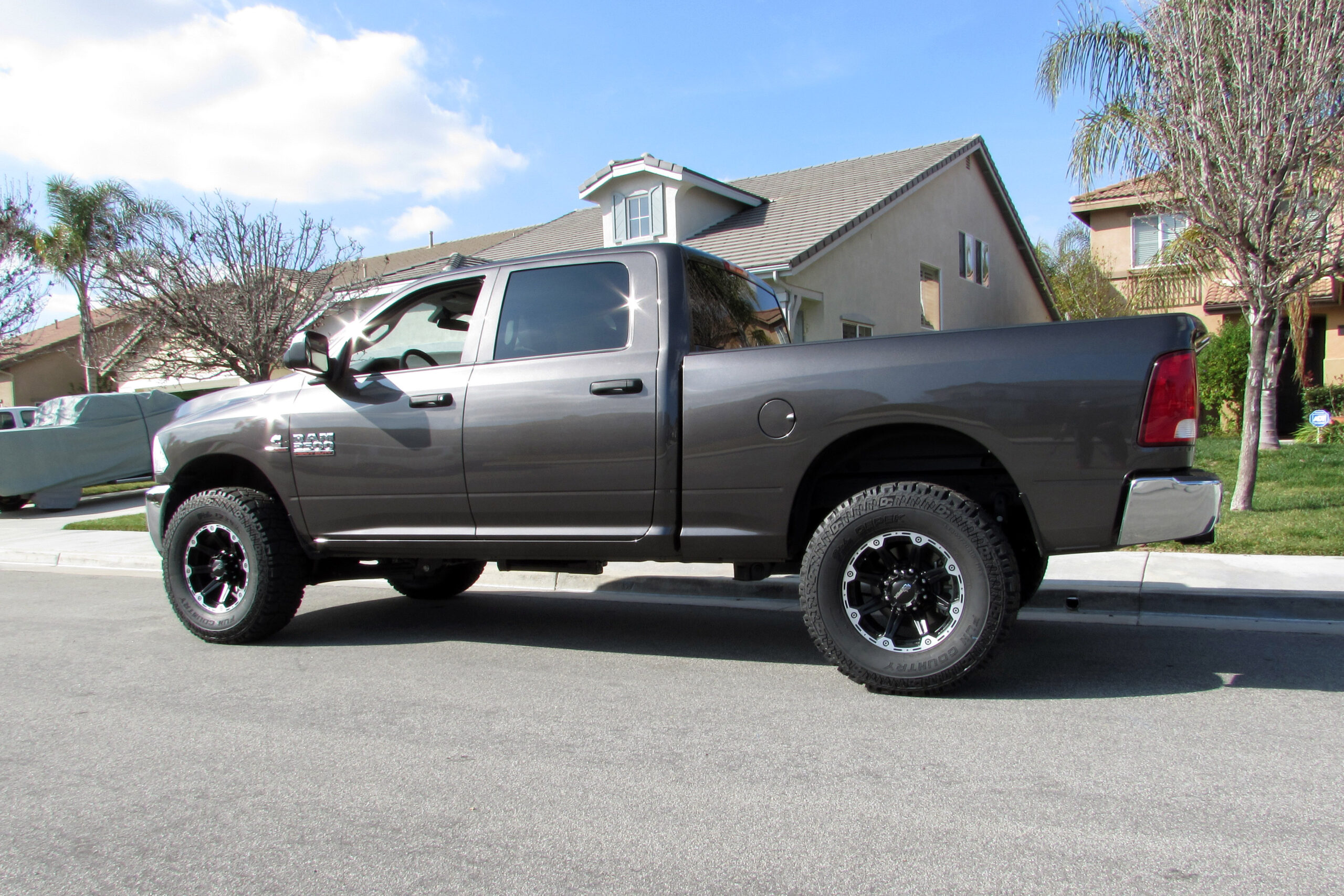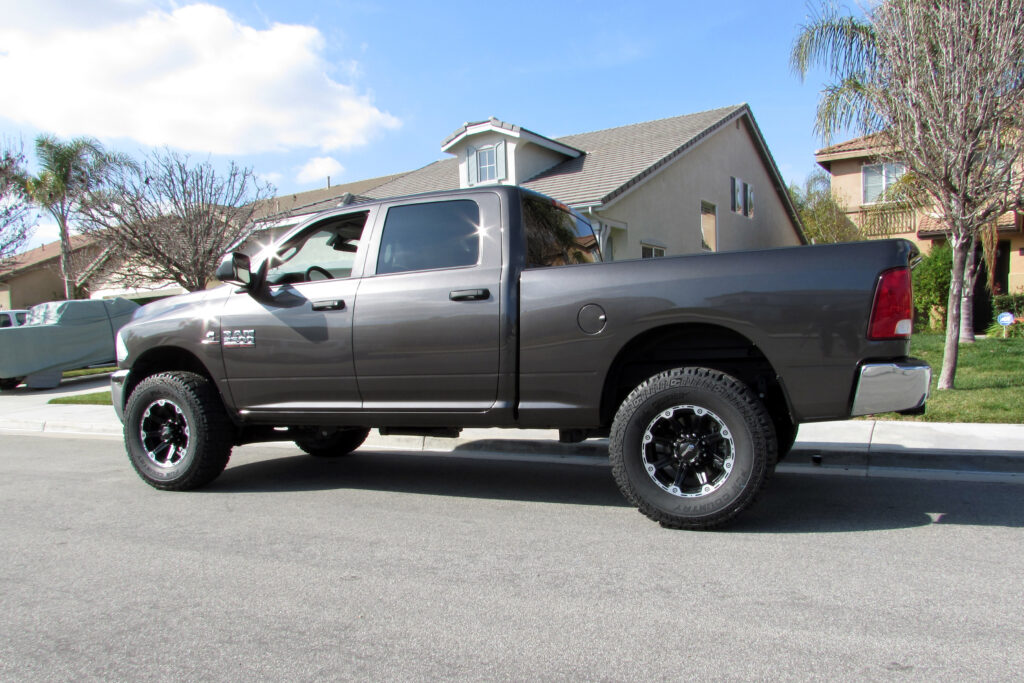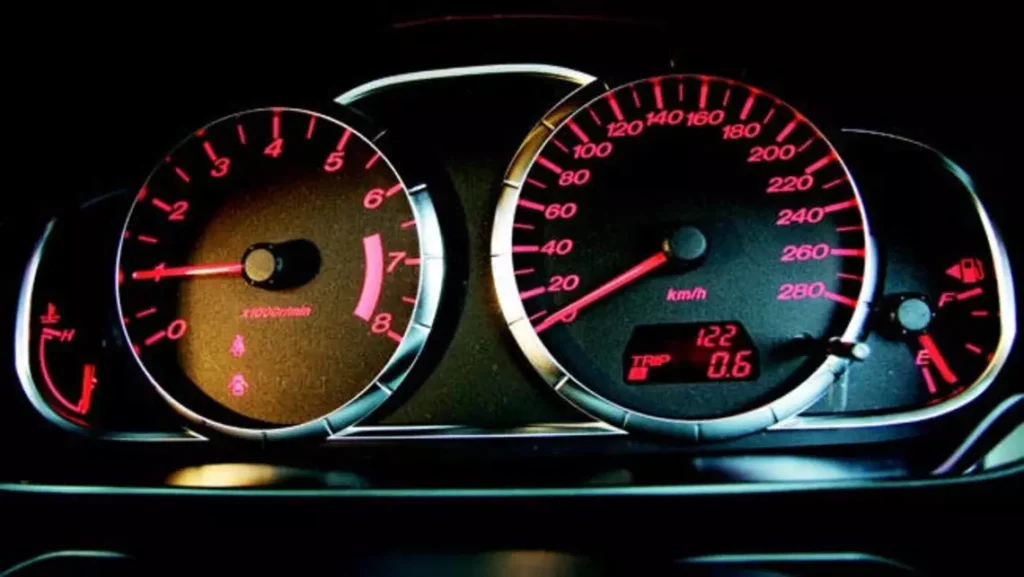
How Much Do 33-inch Tires Affect The Speedometer?
In the earlier days, cars were equipped with smaller circumference tires. However, as we advanced toward the 2020s, car manufacturers began producing vehicles with larger and wider tires. These larger tires were designed to provide better suspension and improved road grip, enhancing the overall driving experience.
Today, vehicles equipped with larger wheels are often seen as technologically advanced and hold a prestigious status in the market. In some instances, drivers choose to upgrade the tire size of their vehicles to keep up with current trends and maintain a stylish appearance.

When considering the transition to 33-inch tires, a significant question arises: How do 33-inch tires impact the accuracy of the speedometer?
The size of your tires plays a crucial role in determining the accuracy of your vehicle’s speedometer. When it comes to 33-inch tires, many enthusiasts opt for these larger, more rugged options for off-road adventures and enhanced aesthetics. However, it’s essential to understand how this tire size can impact your speedometer readings.
In this article, we’ll explore how they can impact your speedometer readings. We’ll explain the science behind this relationship, help you calculate the speedometer error, and provide valuable insights into safety and legal considerations.
How Much Do 33-inch Tires Affect The Speedometer?
Tire size is typically expressed as a series of numbers, with the first number representing the tire’s width in millimeters, the second number denoting the tire’s aspect ratio (the height as a percentage of the width), and the third number indicating the diameter of the wheel in inches. For instance, in a tire size like 285/75R16, the diameter of the wheel is 16 inches.
Now, consider how the speedometer functions. It relies on a simple yet vital principle: the number of revolutions your tires make in a specific distance.
As your vehicle moves, sensors detect these tire revolutions and translate them into speed readings on your dashboard. In essence, the speedometer calculates your speed based on the assumption that your tires are of a particular size.
Here’s where the impact of 33-inch tires comes into play. When you switch from the original tire size specified for your vehicle to larger 33-inch tires, you alter the circumference of your tires. Larger tires cover more ground per revolution than smaller ones. As a result, for every rotation of your 33-inch tires, your vehicle travels a greater distance compared to the original tires.
If your speedometer shows a reading of 60MPH, it moves at a rate of around 65-66MPH at a difference of 9%.
This change in tire circumference directly affects your speedometer readings. With 33-inch tires, your speedometer will indicate a slower speed than your actual velocity. In other words, if your speedometer reads 60 miles per hour (mph), you may be traveling faster or slower, depending on the calibration adjustments needed.
Calculating The Actual Reading For 33” Tire On The Speedometer
Generally speaking, this up-gradation leaps around a 9% increase in the speed of the vehicle, which is not shown by the speedometer. To calculate the increase in speed, you have to get down to some mathematical calculations.
Step 1
Calculate the values (diameter) of the tires
New Tire / Original Tire
Step 2
Calculate the difference between the values of the new tire and the original one.
New Tire – Original tire = Difference
Step 3
Now you have to divide the difference by the original tire size value
Difference/Original Tire = V
Step 4
Now you have to multiply this value by 100 to get your speedometer’s added speed percentage.
V X 100 = Percentage Difference for Speed
Now, this is the percentage of the different speeds of your speedometer that you have attained after installing the 33-inch tire in your vehicle.
Calculating the Speedometer Error:
To determine the exact speedometer error caused by switching to 33-inch tires, you can use a straightforward formula:
Speedometer Error (%) = [(New Tire Diameter – Original Tire Diameter) / Original Tire Diameter] x 100
Once you’ve calculated the percentage error, you can apply it to your speedometer readings to obtain a more accurate representation of your actual speed.
Methods for Speedometer Calibration

Calibrating your vehicle’s speedometer after installing 33-inch tires is essential to ensure accurate speed readings and maintain safety on the road. Here are several methods for speedometer calibration:
1. Professional Calibration: Seek the expertise of a professional mechanic or auto shop that specializes in speedometer calibration. They have access to specialized tools and equipment to recalibrate your speedometer.
2. GPS-Based Speedometer Apps: Download a GPS-based speedometer app on your smartphone or use a portable GPS device. These apps provide real-time speed readings based on GPS signals, which are highly accurate. You can compare the GPS speed with your vehicle’s speedometer reading and make mental adjustments as needed.
3. OBD-II Device: Some modern vehicles come equipped with On-Board Diagnostics (OBD-II) ports that allow for speedometer calibration. You can purchase an OBD-II device and connect it to your vehicle’s port to adjust the speedometer settings electronically.
4. Speedometer Calibrator Module: Invest in a speedometer calibrator module, which is designed for adjusting speedometer readings due to tire size changes. These modules are vehicle-specific and require a basic understanding of vehicle electronics for installation.
5. Online Calculators: Use online calculators or smartphone apps designed to calculate the speedometer error based on your tire size change. Input your old and new tire sizes, and the calculator will provide you with the necessary calibration factor to adjust your speedometer readings mentally.
6. Manual Calculations: For a simple DIY approach, you can manually calculate the speedometer error using the formula mentioned earlier. Then, apply this error percentage mentally as you drive. For instance, if your speedometer reads 60 mph, and your calculated error is 5%, you’ll know that you’re actually traveling at 63 mph.
7. Consult Your Vehicle’s Manual: Check your vehicle’s owner’s manual or consult the manufacturer’s guidelines for speedometer calibration instructions specific to your make and model.
8. Test Drive and Adjust: Take your vehicle for a test drive, preferably on a road with clearly marked speed limits. Use a GPS-based device or smartphone app to monitor your actual speed. Adjust your driving habits based on the speedometer error until your indicated speed matches your actual speed.
9. Tire Pressure Monitoring System (TPMS): Ensure that your tires are inflated to the recommended pressure levels. Improper tire pressure can affect your speedometer readings. Regularly check and maintain tire pressure according to manufacturer recommendations.
How Does Upsizing to 33-inches Affect the Car Speedometer?
When you upsize your tires to 33 inches, you introduce a change in the overall circumference of the tire, which in turn can affect the accuracy of your car’s speedometer. Here’s a closer look at how this change impacts the speedometer:
- Increased Tire Circumference: 33-inch tires have a larger overall circumference compared to the tires that originally came with your vehicle. This means that with each revolution of the wheel, your car covers more ground.
- Slower Speedometer Readings: Because your speedometer calculates your vehicle’s speed based on the number of tire revolutions per unit of time, the increase in tire circumference causes your speedometer to read a slower speed than your car is actually traveling. In other words, the speedometer underestimates your speed.
- Speedometer Error Percentage: The extent of the speedometer error depends on the difference in tire circumference between the original tires and the 33-inch tires. The larger the difference, the greater the error. You can calculate the error percentage using a simple formula: [(New Tire Diameter – Original Tire Diameter) / Original Tire Diameter] x 100.
- Safety Implications: An inaccurate speedometer can have safety implications. For instance, if your speedometer reads 60 mph when you’re actually traveling at 65 mph, you might unknowingly exceed the speed limit. This could result in traffic violations, fines, and increased safety risks.
- Legal Considerations: In some regions, driving with an inaccurate speedometer can lead to legal consequences. Law enforcement expects your speedometer to provide accurate readings, and using 33-inch tires without calibration can be considered a violation.
- Fuel Efficiency and Performance: Inaccurate speedometer readings can also affect your vehicle’s fuel efficiency and overall performance. You may not be optimizing your engine’s efficiency if you’re not aware of your actual speed.
- Tire Wear and Tear: Larger tires may experience uneven wear if not calibrated correctly. Ensuring accurate speedometer readings helps distribute wear more evenly across the tire’s surface.
What Is Plus-Sizing/Upsizing?
When weinstall bigger wheels in our vehicles, the process is known as plus-sizing, moving from a lower-circumference tire to a higher-circumference tire with a larger diameter.
It’s also called upsizing. However, plus-sizing the original set tire diameter of the car/vehicle should always be considered.
It is recommended that the new tire diameter should not exceed the range of 103% of the original set height or diameter of wheels for the vehicle. That means you are given leverage to play by 3% more tire height but don’t stretch the limit any further.
Plus-sizing or upsizing refers to the practice of fitting larger and wider tires to a vehicle than the ones originally specified by the manufacturer. This modification is done to achieve various performance and aesthetic goals, and it has become a popular trend among car enthusiasts and those seeking to customize their vehicles.
Here are the key aspects of plus-sizing or upsizing:
- Tire Size Increase: When you plus-size or upsize your tires, you opt for tires with a larger overall diameter and width compared to the stock tires. The increase in tire size is typically measured in inches or millimeters.
- Performance Improvements: Plus-sizing can have several performance benefits, including enhanced traction, better handling, and improved cornering stability. Wider tires provide a larger contact patch with the road, which can lead to improved grip and control, especially in various driving conditions.
- Aesthetic Enhancement: One of the primary motivations for plus-sizing is to give a vehicle a more aggressive and stylish appearance. Wider tires and larger wheels can significantly impact the visual appeal of a vehicle, making it stand out on the road.
- Suspension Considerations: When upsizing, it’s crucial to consider the impact on your vehicle’s suspension and clearance. Larger tires may require modifications to the suspension system to accommodate the increased size and prevent rubbing against fenders or other components.
- Speedometer Calibration: Changing tire sizes can affect the accuracy of your vehicle’s speedometer. It may display incorrect speed readings if not recalibrated to account for the new tire dimensions.
- Fuel Efficiency and Handling: While wider tires can provide better grip and handling, they may also result in increased rolling resistance, potentially affecting fuel efficiency. Additionally, the change in tire size can impact the vehicle’s steering and handling characteristics.
- Legal and Warranty Considerations: Some regions have regulations regarding tire size modifications. Exceeding these limits may lead to legal consequences. Moreover, upsizing can void certain vehicle warranties, so it’s essential to check with the manufacturer and understand the implications.
Advantages of Upsizing to 33 inches Tire
Upsizing to 33-inch tires offers several advantages for vehicle owners, especially for those seeking improved off-road performance and enhanced aesthetics. Here are some key benefits:
- Off-Road Capability: Larger 33-inch tires provide increased ground clearance, allowing your vehicle to navigate rough and uneven terrain more effectively. This is particularly advantageous for off-road enthusiasts who enjoy activities like rock crawling, mudding, or trail riding.
- Enhanced Traction: The larger footprint of 33-inch tires provides better traction on various surfaces, including mud, sand, gravel, and snow. This improved grip enhances your vehicle’s ability to conquer challenging off-road conditions.
- Improved Ride Comfort: Upsizing to larger tires can result in a smoother and more comfortable ride, especially when driving over rough or bumpy roads. The additional tire sidewall absorbs shocks and vibrations, reducing the impact on passengers.
- Aesthetic Appeal: Many vehicle owners choose 33-inch tires for their visual appeal. They give your vehicle a rugged and commanding appearance, enhancing its overall aesthetics. Larger tires can also complement aftermarket wheels and lift kits.
- Larger Brake Clearance: With 33-inch tires, you often gain increased clearance for larger brakes. This can improve braking performance, especially in heavy-duty or high-performance applications.
- Increased Load-Carrying Capacity: Larger tires may have a higher load-carrying capacity, making them suitable for towing or carrying heavy loads. This can be advantageous for work trucks and recreational vehicles.
- Improved Towing Capability: Upsized tires can enhance your vehicle’s towing capabilities, providing stability and traction when towing trailers or heavy loads. This is valuable for individuals who frequently tow equipment or travel trailers.
- Better Overland Travel: For overland adventurers and long-distance travelers, 33-inch tires offer enhanced durability and versatility. They are less prone to damage and punctures, ensuring reliability during extended journeys.
- Increased Resale Value: Vehicles equipped with upsized 33-inch tires often have higher resale values due to their enhanced off-road capabilities and appealing aesthetics. This can be an attractive feature for potential buyers.
- Customization Options: – 33-inch tires provide a wide range of customization options, allowing vehicle owners to choose tire patterns, tread designs, and sidewall styles that suit their preferences and intended use.
Disadvantages of Upsizing to 33 inches Tire
While there are advantages to upsizing to 33-inch tires, it’s essential to be aware of the potential disadvantages and challenges that come with this modification. Here are some notable drawbacks:
- Speedometer Inaccuracy: One of the most significant disadvantages is the potential for speedometer inaccuracy. Larger tires cover more ground per revolution, causing the speedometer to display slower speeds than the actual vehicle velocity. This can lead to legal and safety issues.
- Fuel Efficiency: Upsizing to 33-inch tires can negatively impact fuel efficiency. The increased rolling resistance and weight of larger tires may result in decreased miles per gallon (MPG), leading to higher fuel costs.
- Reduced Acceleration: Larger tires can lead to reduced acceleration and slower 0-60 mph times. This is particularly noticeable in vehicles with less powerful engines, as the engine must work harder to turn the larger tires.
- Potential Gear Ratio Mismatch: When you upsize tires significantly, it can create a mismatch between the tire size and the vehicle’s gear ratios. This can affect the vehicle’s performance, especially in terms of torque and power delivery.
- Limited Suspension Travel: In some cases, upsizing to 33-inch tires can limit suspension travel, leading to rougher ride quality and reduced articulation off-road. This may necessitate suspension modifications to maintain off-road performance.
- Fender and Body Clearance: Larger tires may rub against fenders or other parts of the vehicle’s body, potentially causing damage or requiring modifications to prevent contact.
- Increased Wear and Tear: Upsized tires can place additional stress on various vehicle components, including suspension, brakes, and drivetrain. This may lead to increased wear and maintenance costs over time.
- Cost: Larger tires are typically more expensive than their smaller counterparts. Additionally, if you need to make modifications to accommodate the larger tires, such as a lift kit or new wheels, the costs can escalate quickly.
- Noise: Larger tires may produce more road noise, impacting the overall comfort and quietness of the vehicle’s interior.
- Legal Considerations: – Some regions have regulations regarding tire size modifications, and exceeding these limits may result in fines or legal issues.
- Potential Warranty Voiding: – Upsizing tires and making related modifications could void certain vehicle warranties, so it’s important to check with the manufacturer and understand the implications.
The decision to upsize to 33-inch tires for your vehicle comes with both advantages and disadvantages that should be carefully evaluated. These larger tires offer enhanced off-road capabilities, improved traction, and a rugged aesthetic appeal, making them a popular choice among off-road enthusiasts and those seeking a unique look for their vehicles.
However, it’s essential to address the potential challenges that come with this modification. The most prominent concern is speedometer inaccuracy, which can have legal and safety implications. Additionally, upsizing can affect fuel efficiency, acceleration, and overall vehicle performance, necessitating adjustments or modifications to maintain optimal functionality.